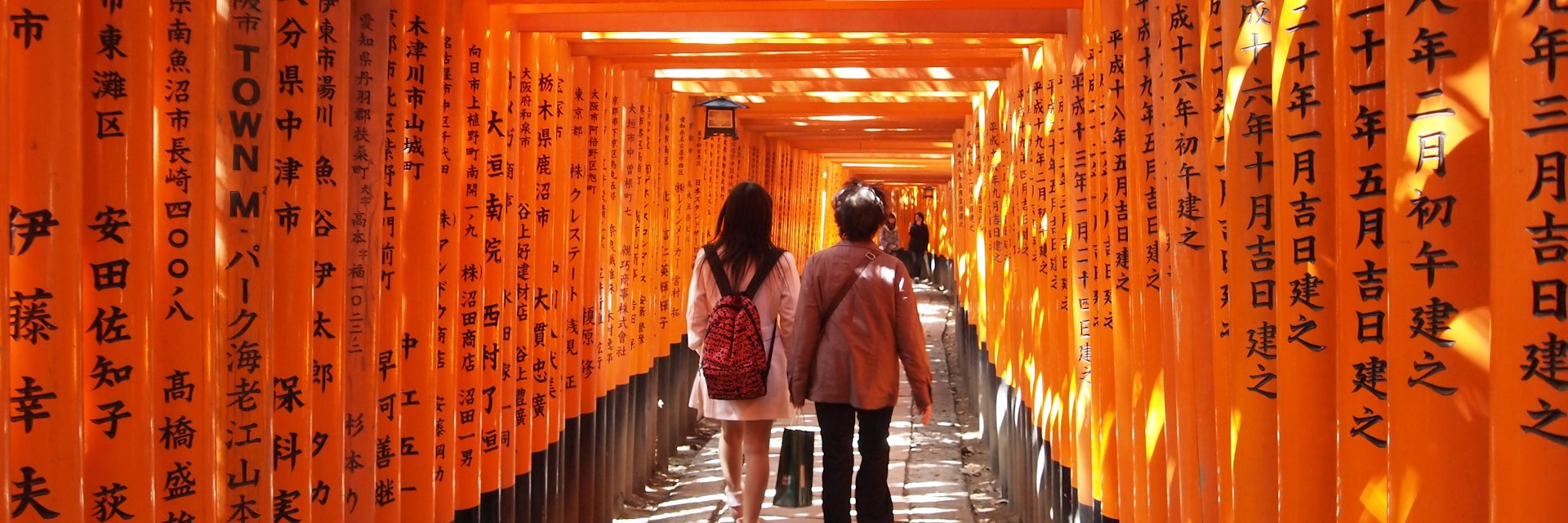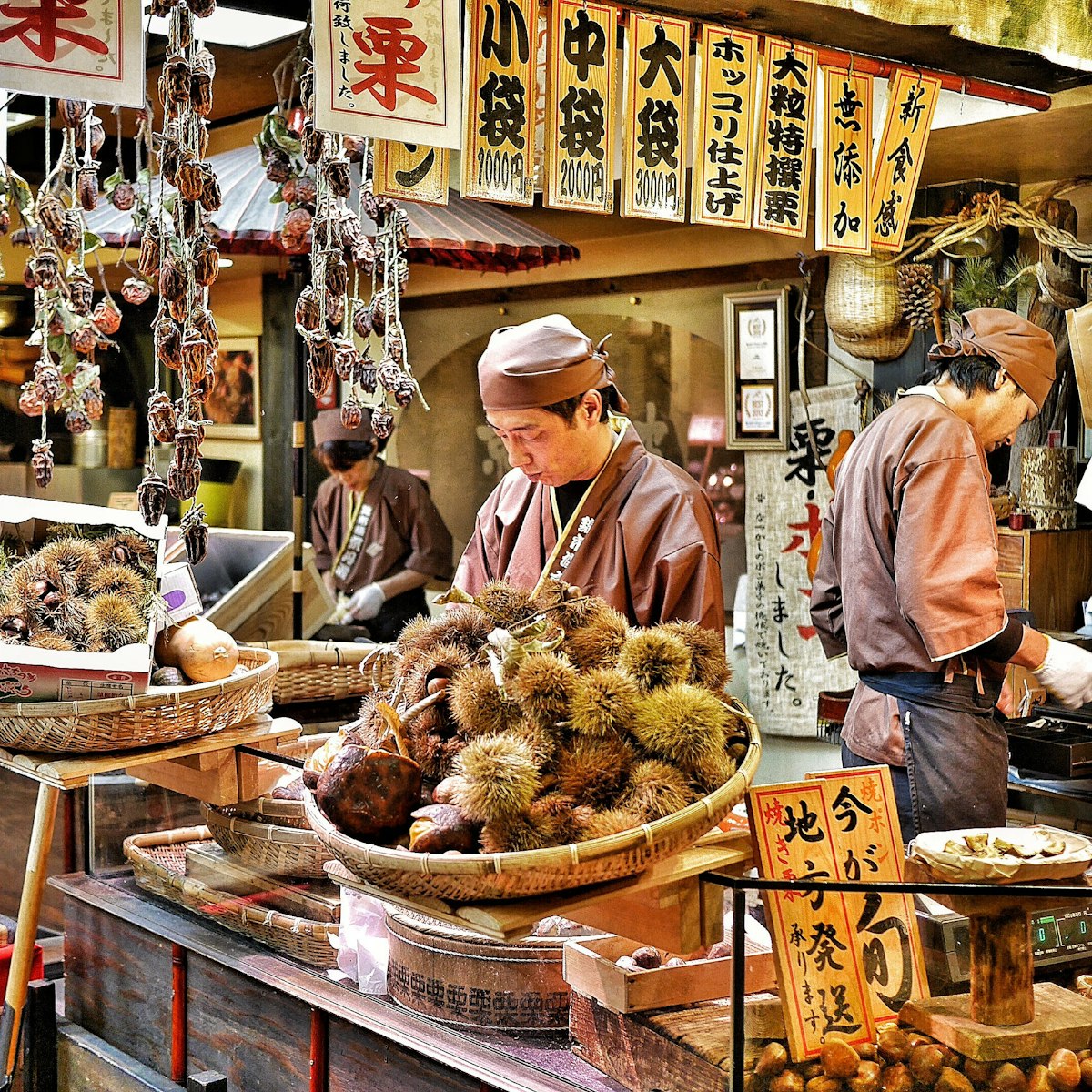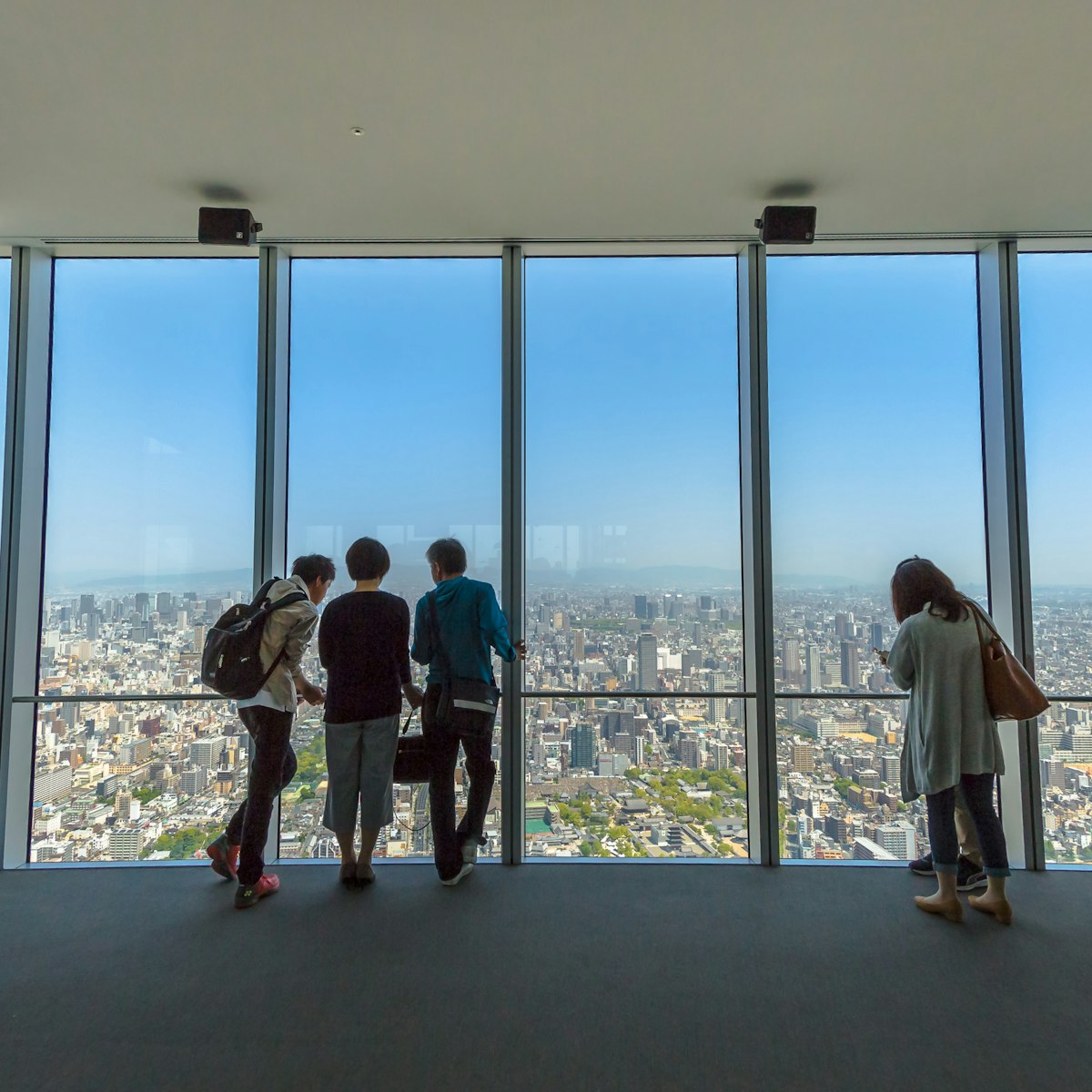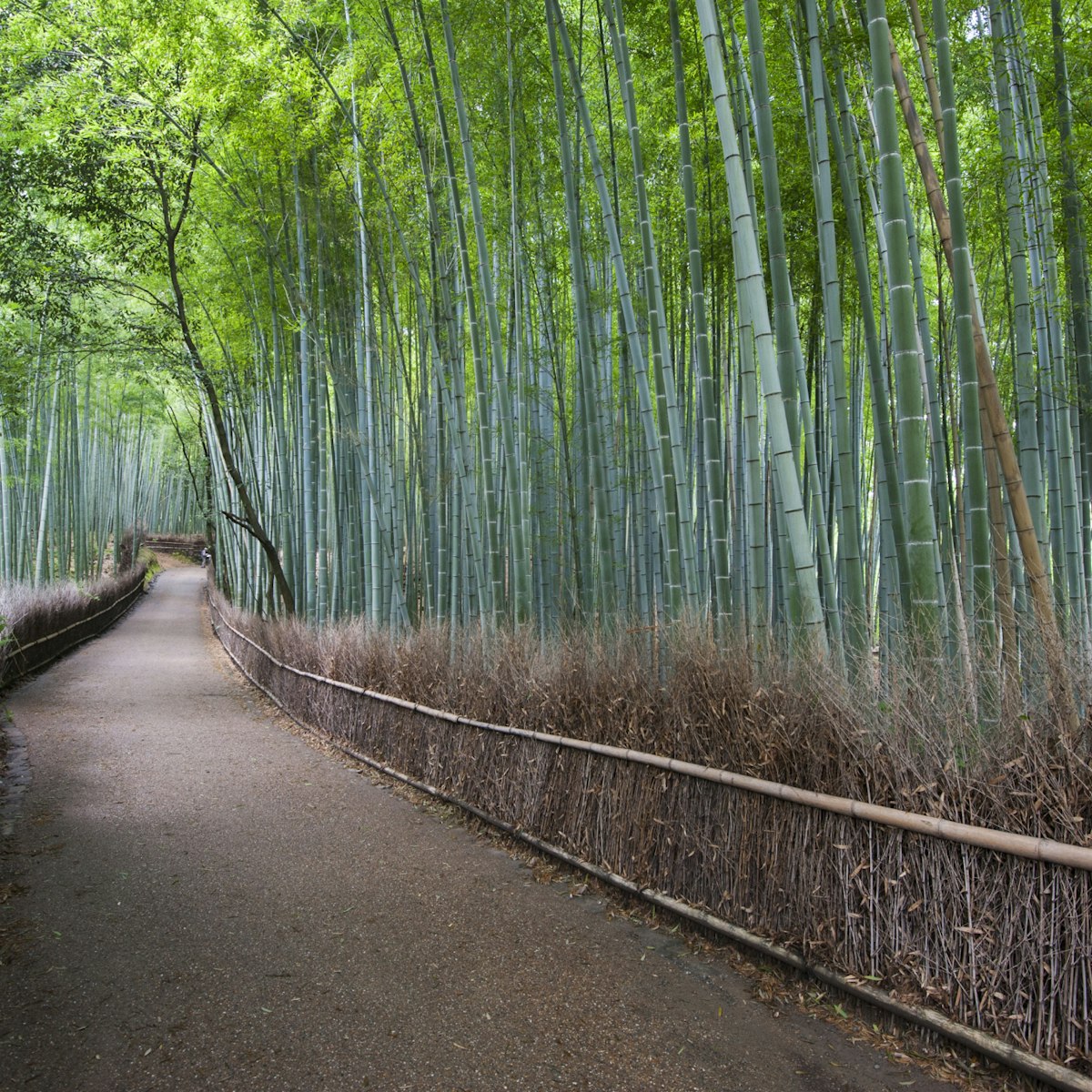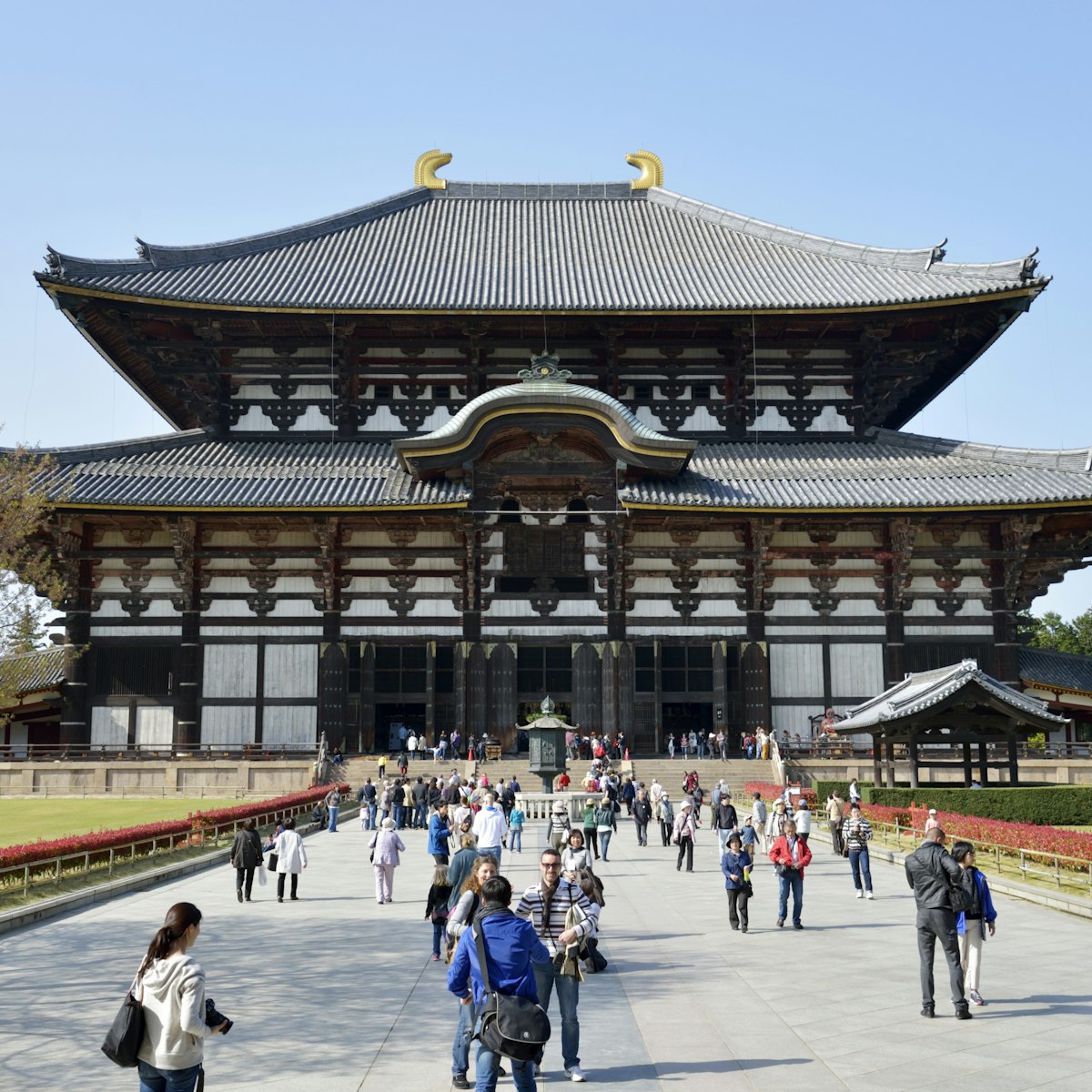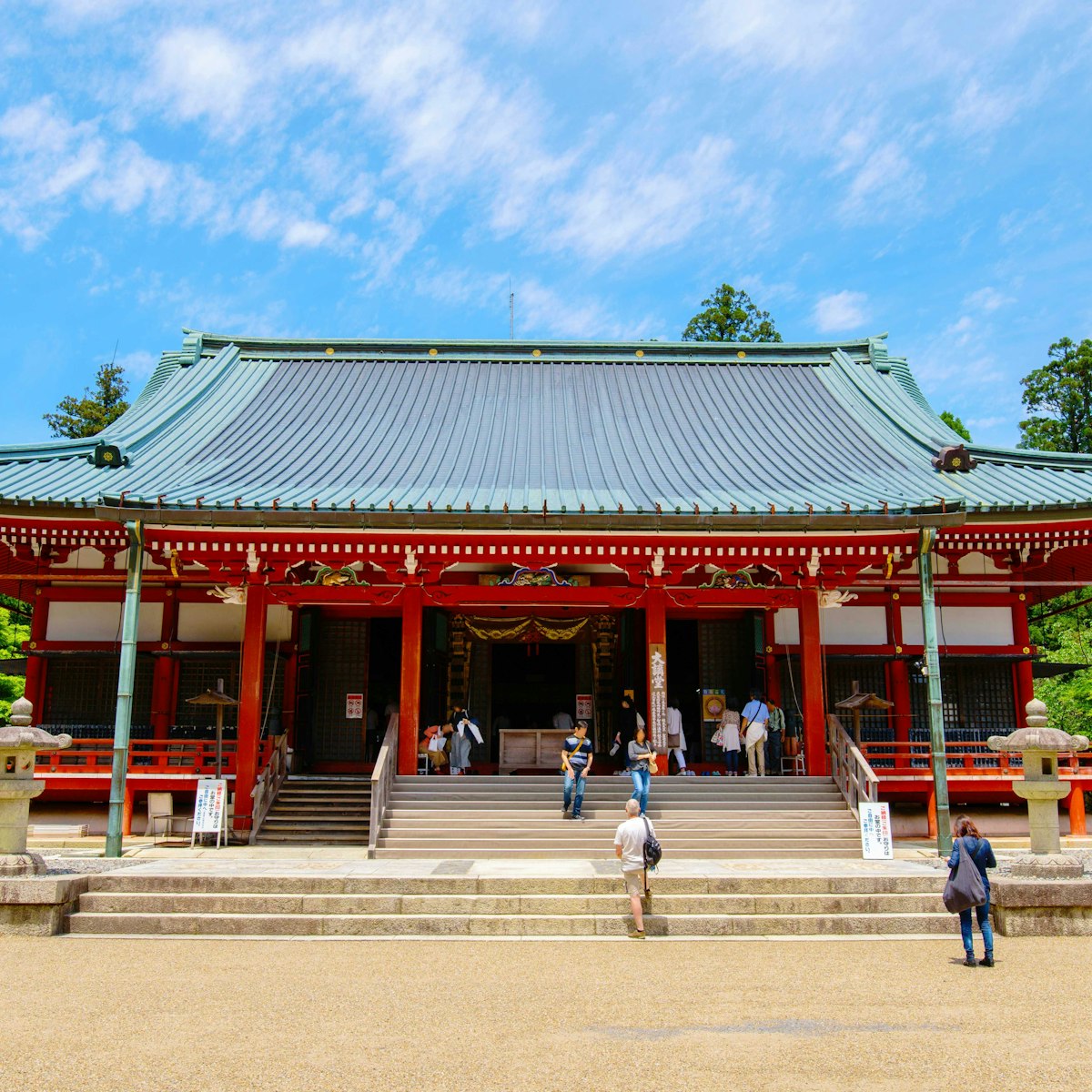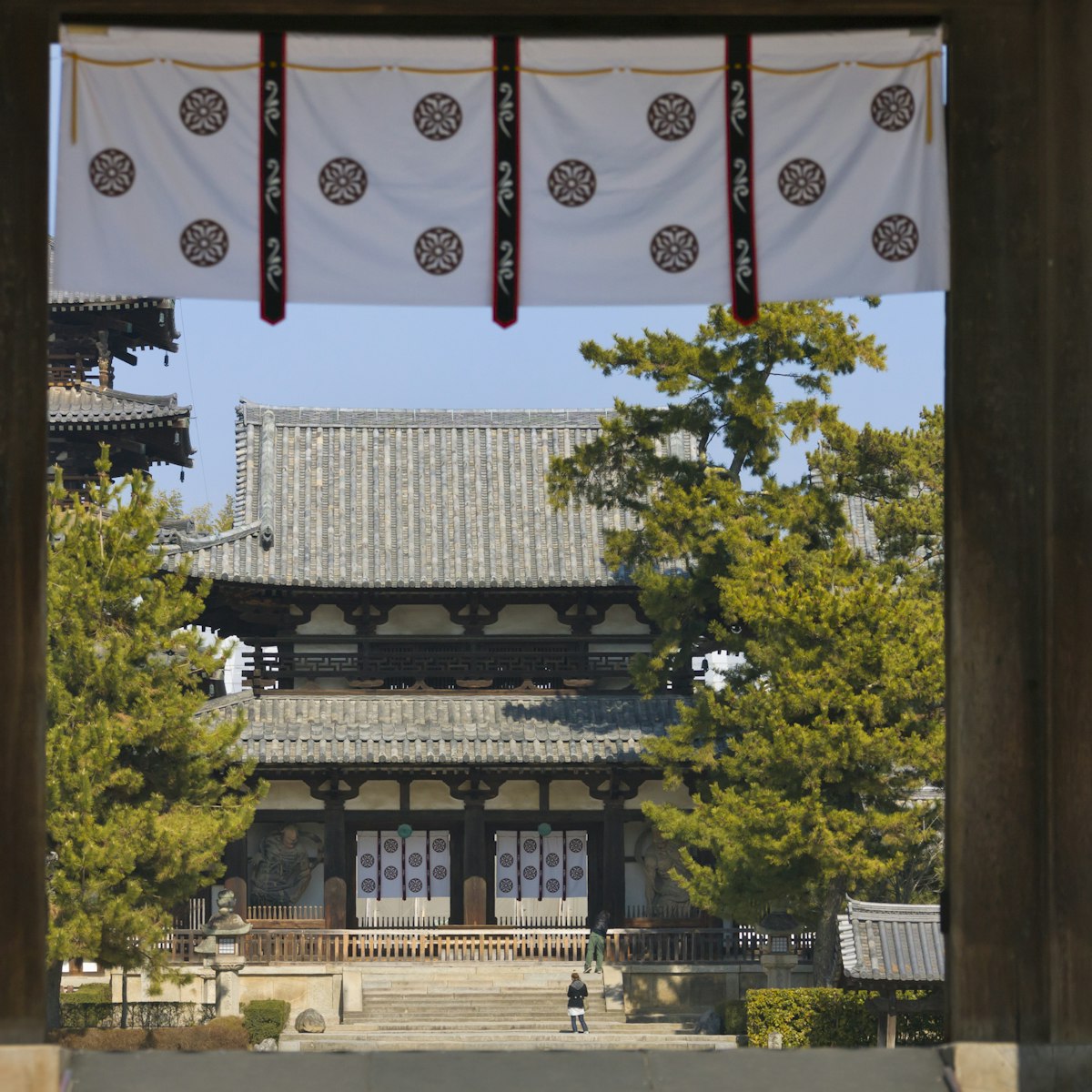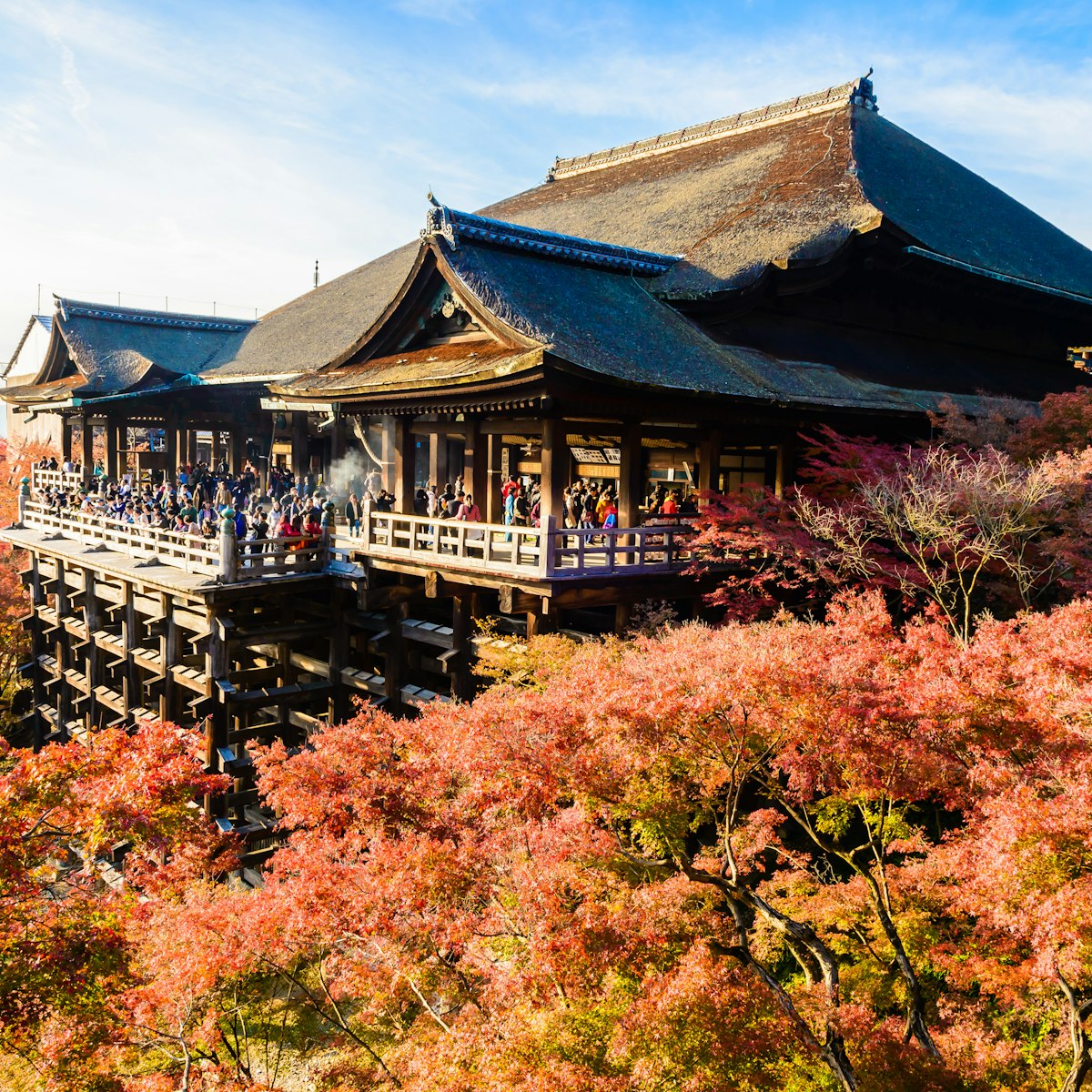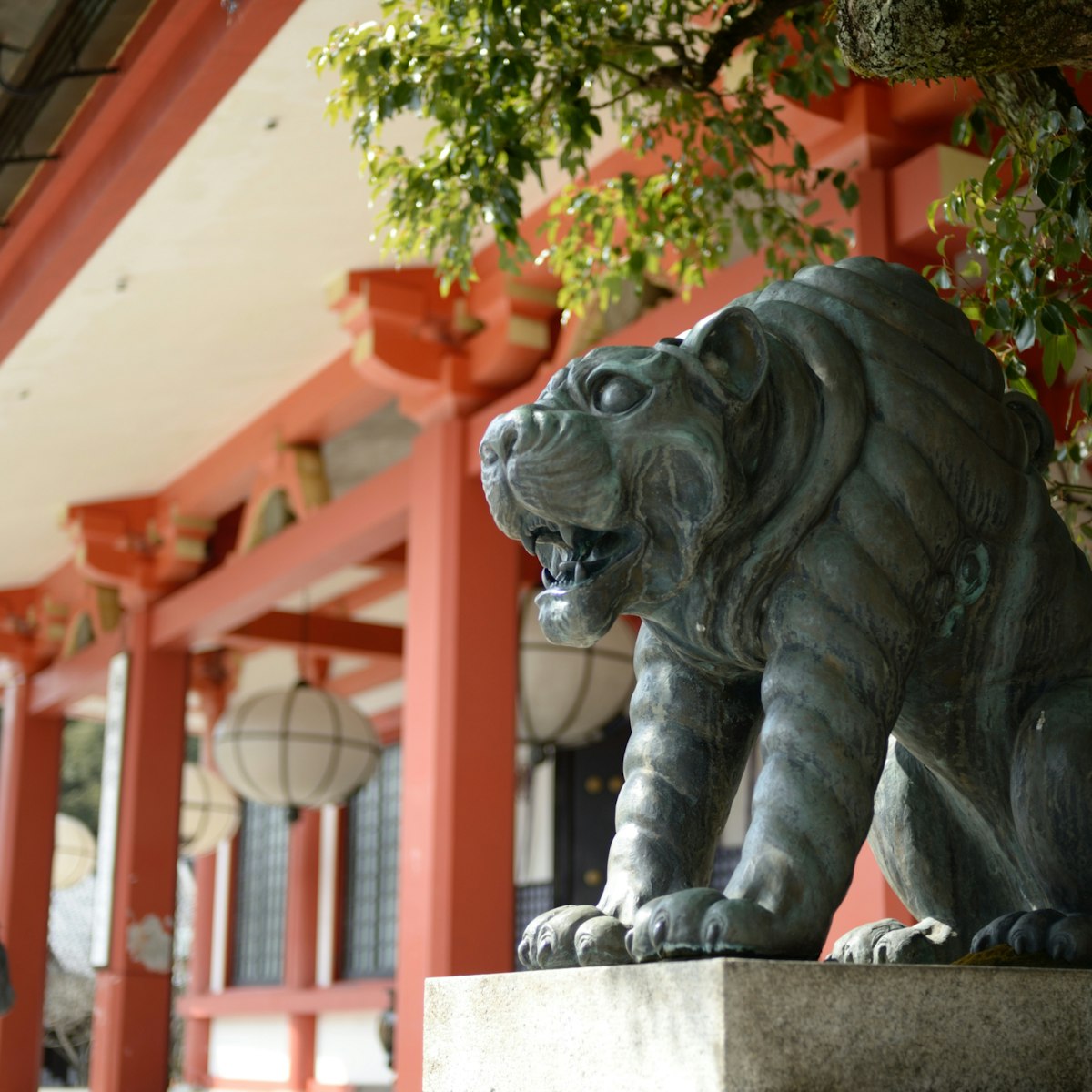With seemingly endless arcades of vermilion torii (shrine gates) spread across a thickly wooded mountain, this vast shrine complex is a world unto its own. It is, quite simply, one of the most impressive and memorable sights in Kyoto.
The entire complex, consisting of five shrines, sprawls across the wooded slopes of Inari-san. A pathway wanders 4km up the mountain and is lined with dozens of atmospheric sub-shrines.
Fushimi Inari was dedicated to the gods of rice and sake by the Hata family in the 8th century. As the role of agriculture diminished, deities were enrolled to ensure prosperity in business. Nowadays, the shrine is one of Japan’s most popular, and is the head shrine for some 40,000 Inari shrines scattered the length and breadth of the country.
As you explore the shrine, you will come across hundreds of stone foxes. The fox is considered the messenger of Inari, the god of cereals, and the stone foxes, too, are often referred to as Inari. The key often seen in the fox’s mouth is for the rice granary. On an incidental note, the Japanese traditionally see the fox as a sacred, somewhat mysterious figure capable of ‘possessing’ humans – the favoured point of entry is under the fingernails.
The walk around the upper precincts of the shrine is a pleasant day hike. It also makes for a very eerie stroll in the late afternoon and early evening, when the various graveyards and miniature shrines along the path take on a mysterious air. It’s best to go with a friend at this time.
On 8 April there’s a Sangyō-sai festival with offerings and dances to ensure prosperity for national industry. During the first few days in January, thousands of believers visit this shrine as their hatsu-mōde (first shrine visit of the new year) to pray for good fortune. For info on the shrine's many schedules, see www.inari.jp/en/rite.
